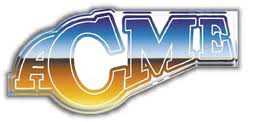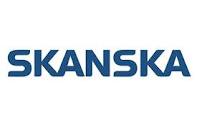
Porter’s competitive five force’s model as provides a useful stepping stone for an organization to identify its competitive position. Consumers are at the stage where they mane valid requests and are definite key stakeholders in companies. Acme appears to have taking this on board from the start by ensuring that it provides its customers with varied products and different designs. Acme Whistles exists on a global scale and it sufficiently able to defend its position against new entrants. The forces will allow Acme to determine where the company stands versus its buyers, suppliers, entrants, rivals and substitutes. Anticipating and exploiting shifts in the forces; and shaping the balance of forces to create a new industry structure that is more favourable to the company. Ease of Entry by competitors into the market As previously stated in the afore-mentioned Acme Whistles has an advantage over its competitors as it has not only gained a level of popularity but has had a level of longevity in its particular industry which makes it that bit more difficult for its competitors. Equally having patented designs which are individually tested as well as various designs, research and development and set up costs make it that more difficult for a potential competitor. The bargaining power of customers Customers in Acme’s market do not have as much buyer power as other industries. With the engraved whistle, there are other manufactures but Acme is able to offer it at a cheaper price as it has the existing foundation to do so. Equally the uniqueness of each design does not easily allow the buyer to switch to another producer and the large of buyers reduces any potential power. The bargaining power of suppliers Evidently Acme is at a stage where it has an established relationship with its suppliers. With…

Political Analysis Although it may not be the ‘credit crunch ’ and the restriction of credit itself that has an impact on SME survival, but rather the consequences arising from the recession, the difficulties may lie with downturn in trade leading to reduction in cash flow and turnover. (Ma and Shumin 2010) A Pestle analysis is therefore necessary to relay any future potential issues. Economic Analysis With the current state of the economy Acme Whistles Ltd has managed to avoid the negative impact of the recession by having the demands of the B2C customer as well as the B2B customer and offering a range of whistle products they appeal considerably to their particular target market. It is important in this particular economic climate to be aware of emerging markets entwined which consequently transforms to potential global competition where levels of resources could allow a level of some type of cost advantages and as well as cash flows for research and development. Social Analysis With emerging markets likeChinaandIndia, comes the demand for new products as well as the careful consideration for the needs and wants of the various types of customers. In additions customers across the globe are constantly moving towards being more environmentally conscious therefore careful deliberation has to be taken to determine what product is best suited to a particular market. Legal Analysis Even though one of Acme ‘s competitive advantages is that it has a range of patented designs which span back to the 1880’s it currently also has the longevity as well as the popularity in form of large customer base (both domestic and business) spanning across 120 countries. Evidently with low cost producers as well Acme Whistles existing and evidently with this particular climate, it might be difficult to exist or enter the…

One of the most comprehensive definitions of human resources management defines the term as “the policies and practices involved in carrying out the ‘people’ or human resource aspects of a management position, including recruitment, screening, training, rewarding and appraising” (Randhawa, 2007, p.2). Essential characteristics of human resources have been specified as valuable, rare, inimitable, and non-substitutable (Deb, 2006). Strategic human resource management, on the other hand, can be explained as an approach defining the manner in which organisational aims and objectives is going to be achieved through people with the use of HR strategies, as well as, integrated HR policies and practices (Armstrong, 2009). In other words, the main difference between HRM and strategic HRM relates to strategic framework the latter form of HRM adopts in relation to supporting long-term organisational aims and objectives. Three basic propositions of strategic HRM consist of idea that “the human resources or human capital of an organisation play a strategic role in its success and are a major source of competitive advantage” (Armstrong, 2008, p.34), integration needs to be maintained between HR strategies and business plans, and individual HR strategies need to be linked to each other in order to achieve horizontal integration. Increasing numbers of organisations are giving preference to strategic HRM approach over traditional HRM because a strategic approach effectively contributes to the improvement of a wide range of organisational elements and processes such as employee loyalty, organisational culture, organisational structure, effectively matching available resources in order to meet the demands of the future. Learning organisation can be defined as “an organisation in which everyone is engaged in identifying and solving problems, enabling the organisation to continuously experiment, improve, and increase its capacity” (Thomson and Baden-Fuller, 2010, p. 295). The role of HRM systems in facilitating organisational learning can be explained in…
By John Dudovskiy
Category: HRM

Work-life balance is no longer only a management buzzword, and it has become one of the most pressing HR issues globally. This is because intensifying level of competition has increased the amount of demand and pressure for organisations and their individual members. At the same time, it is understood that “for many employees throughout the world, balancing their work and personal lives is a significant concern” (Mathis and Jackson, 2011, p.67). First of all, it needs to be specified that “work-life balance can be seen as the reconciliation between paid work and life, or the balance that needs to be orchestrated between work and non work demands” (Al-Araimi, 2011, p.119). Organisations differ in terms of their approach and the level of their involvement in achieving work-life balance for employees. It has been stated that “those organisations who have recognised work/life balance as important, report they have increased the availability of flexible work options, such as part-time work, flexible starting and finishing times, study leave, paid parental maternity leave, and team work, and their employees have increasingly accessed these options” (Budhwar, 2004, p.245). Maintaining work-life balance is a considerable HR issue for UK organisations. It has been identified that “UK workers work the longest hours in Europe, and many managers and professionals claim to be working more than 60 hours per week” (Flexibility.co.uk, 2012, online). Moreover, according to a research conducted by Bupa, a leading international healthcare group, more than six million UK employees are chained to their desks, and only thirty per cent take a lunch hour (Bupa, 2012, online). At the same time, the numbers of alternative working patterns are increasing as a response and partial solution to this issue. Specifically, it has to be noted that “in the UK, around 3.5 million people are working full-time or part-time…

The so-called new science has been perceived as a possible source of influence on HRM by Audrey Collin (2010) in Contextualising HRM: developing critical thinking. The new science approach, also known as a holistic approach involves studying issues as a whole, rather than by dividing them into components. This approach has been developed to challenge Newton’s mechanic notion of universe that advocates the idea of dividing ideas and objects into small forming components so that they can be studied with an increased level of efficiency (Achouri, 2012). Collin (2010) advocates the idea of adopting a holistic approach towards HRM by convincingly claiming that this approach will assist in understanding the complexity of issues. Specifically, the author states that “to understand complexity, new approaches that recognise the whole rather than just its parts – a holistic approach – and attention to relationships between the parts needed, and these are being developed” (Collins, 2010, p.98). This viewpoint towards business management in general and HRM in particular deserves to be agreed with for several reasons. First of all, HRM functions need to be reminded and analysed to justify this claim. The functions of HRM can be divided into two, managerial and operative categories. Managerial HRM functions include planning, organising, staffing, directing, and controlling, whereas, operative functions consist of procurement, development, compensation, maintenance and motivation, integration, and industrial relations (Pravin, 2010). According to new science, or holistic approach these HRM functions need to be dealt with as whole, rather than separate components. For instance, “HR planning aims, in general, for the target and task oriented allocation of employable human resources for a specified or indefinite period” (Michalski, 2011, p.13). If this important HR function is dealt with as a separate issue from other HR and other organisational functions, than this may lead to loss of…
By John Dudovskiy
Category: HRM

As the biggest social networking site (SNS) Facebook pursues the mission of giving people the power to share and make the world more connected. Founded in 2004, Facebook has more than 843 million daily active users and employs more than 3000 people, who maintain website’s operations in more than 70 languages (Fact Sheet, 2012, online). Today Facebook is the biggest SNS in the world; nevertheless, it is faced with a range of serious business challenges that need to be dealt with timely and effectively in order to ensure the long-term growth of the business. Specifically, the emergence of recently launched Google+ as the main competitor, presents significant business challenges for Facebook taking into account high level of a wide range of tangible and intangible resources possessed by Google. Moreover, growing personal data security concerns fuelled by media represents another significant challenge for Facebook that threatens the company business perspectives unless dealt with effectively and efficiently. Also, the lifecycle of services introduced by SNS have greatly diminished increasing the importance of innovativeness and creativeness for Facebook. Furthermore, the world’s biggest SNS is faced with growing numbers of local competitors that possess substantial competitive advantage over the Facebook. Namely, local SNS associated with specific countries develop website’s design and various features taking into account cultural and other differences associated with specific regions whereas Facebook only able to offer standard design and features globally, and thus may find it difficult to attract the representatives of various cultural backgrounds. References Fact Sheet (2012) Facebook, Availabel at: http://newsroom.fb.com/content/default.aspx?NewsAreaId=22 Accessed April 5, 2012

Construction industry in UK is one of the biggest contributors to the local economy. Specifically, “in 2010 the Gross Value Added of the construction industry in the UK was £90.7 billion, 7.0% of the total GVA. There were 2.07 million workforce jobs in the UK construction industry in September 2011, 6.6% of all workforce jobs” (Maer, 2012, p.1). UK construction industry was among industries worst hit by recent global economic crisis of 2008-2012, particularly 2009 being the worst year since 1940s (Chan and Cooper, 2011). The biggest players in UK construction market include Balfour Beatty, Carillion, Laing O’Rourke, Babcock, Morgan Sindall, Skanska and others. The total turnover of top 100 construction companies in UK for 2011has amounted just under £64 billion (Construction Index, 2011). Balfour Beatty has maintained the market leadership in UK in terms of both, turnover (£105.41 million) and profit (£187 million) for several years. Skanska has been able to improve its position in the marketplace significantly during the last year to join top 10 UK construction companies by turnover, achieving the turnover of £1.267.3 million in 2011 (Construction Index, 2011). Current construction industry trends in UK involve cost-cutting as a means of survival as a direct result of the recent global economic crisis (Coughlan and Coughlan, 2011), increasing concern for environmental impacts of construction operations (Blewitt, 2008), and employee health and safety issues becoming even more significant. Construction companies in UK would find it highly challenging to address these trends in a simulations manner due to the presence of contradictions between these trends. Specifically, while construction companies have to explore the potential for cost-cutting as a result of the crisis, at the same time they are “forced” to become ‘greener’ and more environmentally friendly and these initiatives require substantial financial investments to be implemented. References Chan,…
By John Dudovskiy
Category: Industry Analysis

SWOT analysis can be used to illustrate the current position of Skanska in UK construction market and factors affecting the business, the abbreviation standing for strengths, weaknesses, opportunities, and threats associated with the business. The following table illustrates Skanska SWOT analysis for UK. Strengths Large portfolio of construction services Positive brand image contributed by ‘green’ initiatives Presence of some iconic projects in portfolio (e.g. London’s The Gherkin) Weaknesses Occasional cashflow issues High operational costs Overall higher costs of services Opportunities Development of separate division for lower-budget projects Entering the marketplace of emerging economies e.g. China and India Development of new niche markets Threats Delay of expected recovery of UK construction industry New competitors with access to cheaper resources entering the market Legislative changes in UK with possible negative impacts

Ryanair Porter’s Five Forces Analysis. Porter’s Five Forces analytical tool assists in analysing competitive environment for Ryanair Bargaining power of suppliers Boeing has been traditionally Ryanair’s main supplier, however, there are reports that “Ryanir is interested in Comac’s planned C919 aircraft, which is being developed to rival the Boeing 737 and the Airbus A320, the dominant players in the commercial aircraft market” (Milmo, 2011, online). Comac, Chinese jet manufacturer, is attracting Ryanair’s interest due to grater amounts of seats within its planes, as well as increased level of efficiency associated with energy consumption (Cliff et al, 2011). This fact signals about Ryanair’s increasing bargaining power towards its main supplier, Boeing. However, the supplier switching costs for Ryanair is extremely high due significant amount of expenses involved associated with pilot retraining needs. Moreover, “airline pilots have a strong bargaining power in the airline industry” (Pelapu et al, 2007, p.48), because there is no abundant supply of highly qualified and experienced pilots. Nevertheless, Ryanair enjoys rapidly increasing power towards a different category of its suppliers. Specifically, as Walsh (2011) confirms, highly intensified level of competition among airports has significantly increased the bargaining power of airline companies in their business relationships with the local airports. Bargaining power of customers Bargaining power of customers can be explained as “an advantage that comes from gathering together to put collective pressure on producers to lower prices or improve quality” (Business Dictionary, 2012, online). Ryanair customers enjoy high bargaining power because switching to another airline is simple and not associated with additional expenses. However, it has to be mentioned that only for Ryanair, but for airline industry in general “the bargaining power of buyers is relatively high and increasing, since most airline companies are forced to cut costs by aggressive competitors” (Szymanski, 2011, p.7) Increased level of…

There are no universal learning and training principles that relate to all work situations and environmental settings in the same manner. In other words, there is a wide range of economical, cultural, political, legal, environmental and other factors that affect the formation and utilisation of learning and training principles within individual work situations and environmental settings. This paper is mainly concerned with the provision of learning and training in Chinese organisations in particular, taking into account a wide range of specific characteristics and circumstances associated with China and various forms of organisations operating in that country. The following table represents the key characteristics of HR training and development in various forms of ownership in China and a range of factors that have contributed to the formation of these characteristics are discussed further below. Government and civil service organisations State-owned enterprises Private enterprises Joint ventures and large multinational companies Training and development is provided at relatively high levels with increased focus on political studies Training and development is provided mainly to managerial, professional and technical staff The lowest level of formal training and development opportunities for employees compared to other forms of ownership High level of training and development opportunities provided to employees Table 1: Key characteristics of HR training and development in various forms of ownership in China Source: Storey (2011) The Economy of China and its Impact on Learning and Training Today China is seen by many as an emerging economic superpower with GDP growth of 10.45 per cent in 2010 and forecasts for growth of 10-12 per cent yearly for the next several years to reach 9,982.08 billion USD in 2015 (Economywatch, 2012, online). The main drivers behind dramatic economic developments in China are perceived to be important economic reforms that have enabled the utilisation of advantages…
